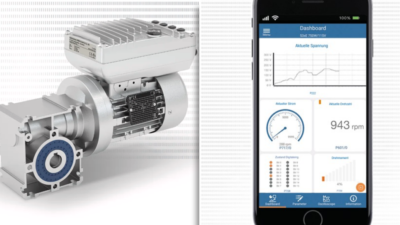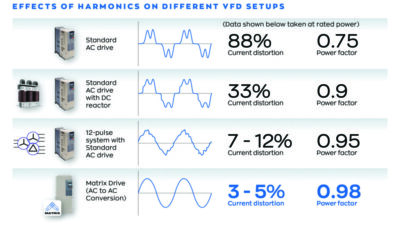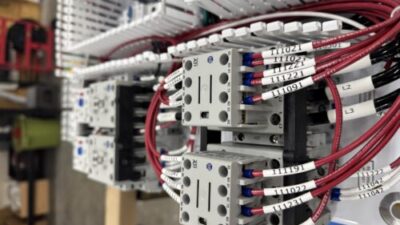NEMA and IEC motors are similar but have different usual practices; take care when managing a facility with a mixed population
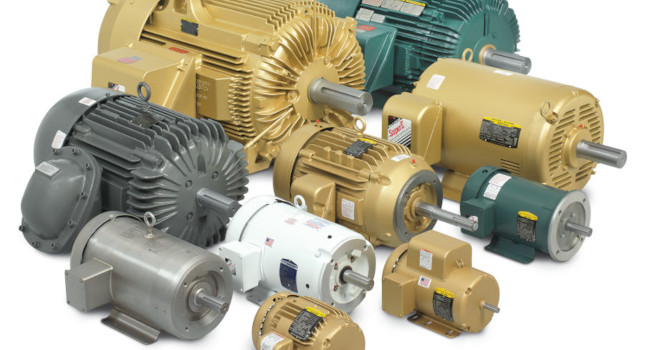
Most readers of Plant Engineering magazine are familiar with electric motors made to National Electrical Manufacturers Association (NEMA) standards as commonly used in the U.S., Canada, Mexico, some parts of South America and Saudi Arabia. But nearly 70% of the industrial motors sold worldwide are made to International Electrotechnical Commission (IEC) standards. Motor standards for these motors are MG 1 for NEMA and the 60034 series and 60071 for IEC that define mechanical, electrical, and performance specifications.
Many people do not fully understand the differences between these electric motors. Not only are there mechanical mounting and dimensional differences, but usual features and electrical designs are different as well. Users must recognize and adjust for these variations as they manage projects around the world. It is becoming increasingly commonplace to import machinery using IEC motors and many original equipment manufacturers (OEMs) to use IEC motors on products for export outside of North America.
In the past, NEMA manufacturers were usually independent companies based in the U.S. Today, many large motor companies in North America are part of large multi-national companies that make both NEMA and IEC motors. The same engine components may show up in both.
This article focuses on 3-phase NEMA low-voltage motors (less than 600 V) in the 1 to 350 hp (0.746 to 261 kW) range and their IEC equivalents most used in industry.
Mechanical differences
The most obvious mechanical difference is that NEMA motors are defined in inch units and IEC are defined in metric units. Beyond that, NEMA motors offer a wider range of motor enclosures not common in the IEC designs such as open-drip proof motors used in many compressor and fan applications (see Figure 1).
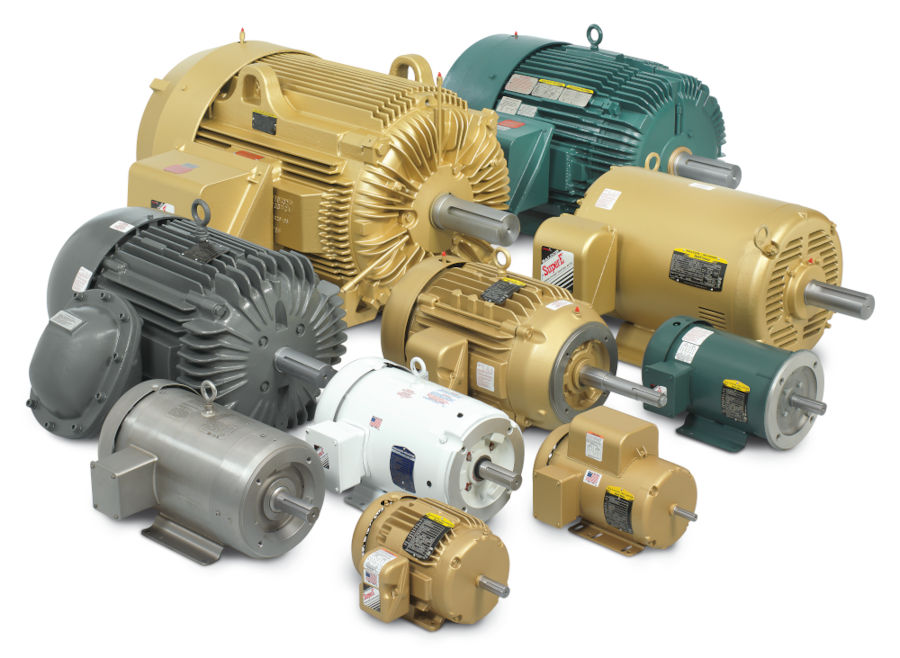
IEC motors are commonly made with either finned cast aluminum or iron frames, while NEMA motors are made with the finned cast frames and rolled steel frame housings (see Figure 2). There are only slight differences in frame sizes based on shaft height (see Table 1). The shaft diameters and lengths are different between NEMA and IEC as are the mounting base dimensions and mounting hole spacing.
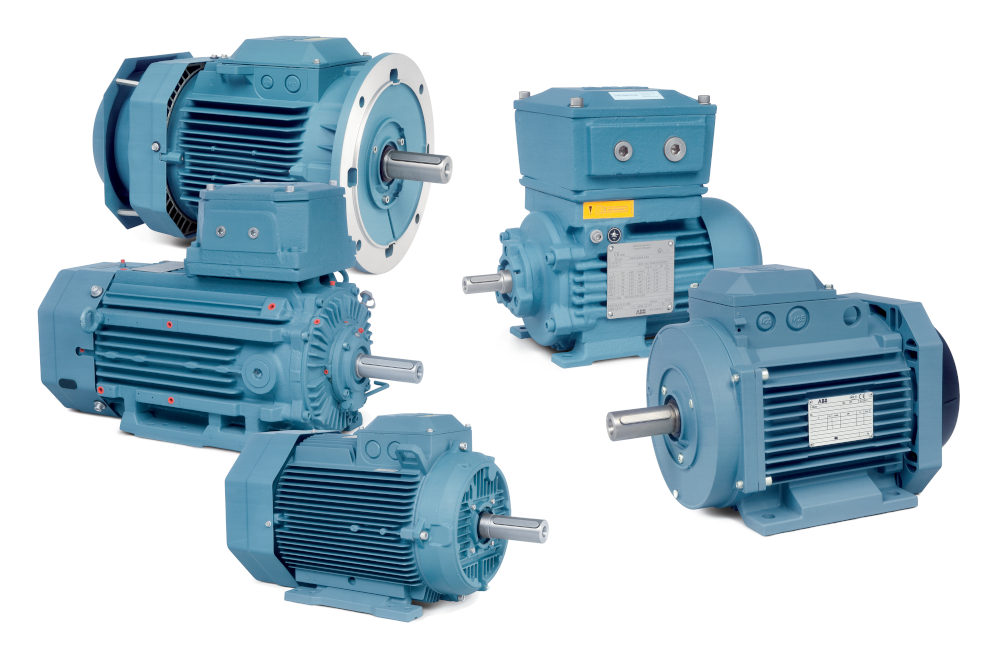
An especially important difference is that NEMA motors commonly use a polyurea-based grease where most IEC motors use lithium grease. These greases are not compatible and should not be mixed. If a plant’s motor population is mixed between NEMA and IEC, care must be taken when someone is sent to regrease motors.
Typically, NEMA motors are made with a side-mounted conduit box (F1 position) with leads for connections. Most IEC motors have the conduit box at 12-o’clock (F3) with a terminal block for connections.
NEMA motors usually do not have a shaft seal except for some severe duty designs such as those made for IEEE-841 compliance where a noncontact rotating shaft seal is used. In some custom designs, a lip seal may be used on the shaft to prevent ingress of liquids. Many IEC motors are supplied with a standard lip seal.
NEMA motors often have a “weep hole” at the lowest point of each end plate to allow condensation to exit. On severe duty motors, this hole is changed to a breather drain. This practice is not common on IEC motors.
Over the past few years, NEMA has started to adopt IEC standards as part of MG 1. The levels of ingress protection (IP) for motors and for cooling (IC) are shown in the MG 1 standard. Recently, the vibration standards have been harmonized.
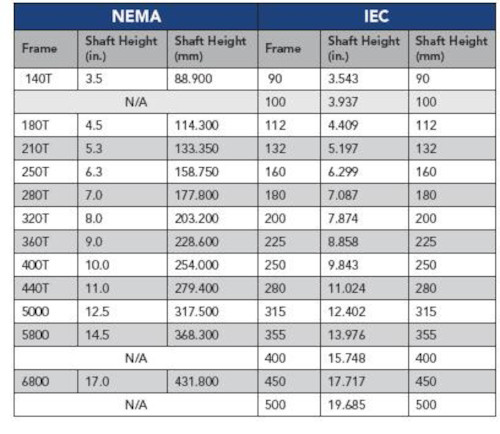
Some usual mechanical configurations used in North America are not common in the IEC world. Pump motors (JM and JP) with provisions for axial shaft load are not used on IEC motors because the pumps take the axial load from the impeller instead of the motor.
Electrical differences
NEMA motors are generally designed with NEMA Design B torque/current characteristics per Part 12 of the MG 1 standard. Those with higher inrush current are Design A. IEC motors in these sizes are IEC Design N and NE, typically having somewhat higher inrush currents than a NEMA Design B motor. High starting torque motors are NEMA Design C, like IEC Design H and HE. High slip motors used in punch presses and oil beam pumps are NEMA Design D; there is not an IEC equivalent.
The 3-phase 60 Hz motors used in North America are usually 230/460 V with a 9-lead 1-wye/2-wye connection. An IEC motor at 4 kW and larger have wye/delta connections for 230/400 volts where they start in a wye/ delta manner, not direct across the line (see Table 2).
The difference between NEMA and IEC is not the voltage/frequency combinations, but the tolerance each standard places on these parameters. The maximum voltage variation allowed by NEMA is ±10% at rated frequency, while the maximum allowable frequency variation is ±5% at rated voltage. IEC separates motors into operating zones where a zone A motor shall be capable of performing its primary function with a voltage within ±5% of rated and a frequency within ±2% of rated. IEC also recognizes zone B, which allows a voltage variation of ±10% and a frequency variation of +3%, -5%.
Most NEMA motors have a continuous duty cycle. NEMA also defines intermittent duty motors for some applications with 15-minute, 30-minute and 1-hour duty cycles. This means the length of time for the motor to operate at full load before reaching maximum safe operating temperature, then the motor must cool to ambient before it is operated again. IEC has a more elaborate duty cycle rating system that also includes cyclic loads, but the S1 is the normal continuous duty cycle on most motor designs. IEC 60034-1 goes into more detail on the definitions of these duty cycles with illustrative charts.
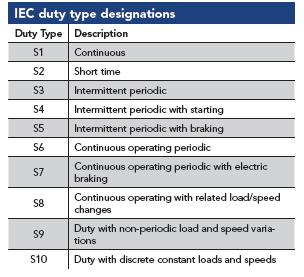
Most NEMA motors are designed with a service factor of 1.15. In section 1.42 of NEMA MG 1, service factor (SF) is defined as “a multiplier, which, when applied to the rated horsepower, indicates a permissible horsepower loading, which may be carried under the conditions specified for the service factor.” IEC motors do not recognize a service factor, so they would be equivalent to 1.0. In the U.S., some compressor manufacturers use the service factor when sizing their motors. If an IEC motor is used on a compressor sized in this manner, a motor of a higher power rating may be needed.
Both NEMA and IEC motors are rated for a standard 40°C (104°F) ambient with a minimum temperature of -15°C (5°F). The insulation classes between motors are the same for Class B, F and H. NEMA motors are rated for 3,300 feet (1,000 meters) above sea level altitude, the same as in IEC standards.
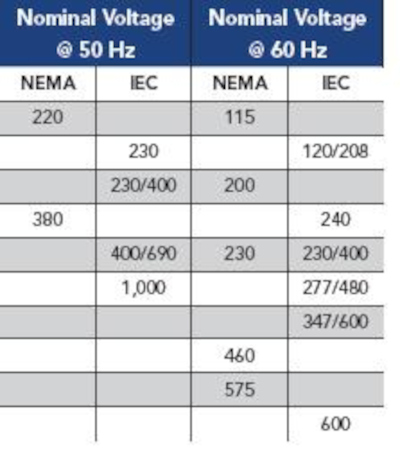
Motor efficiency
NEMA motor efficiencies are defined in MG 1 and have two levels defined as “Energy Efficient” as shown in table 12-11 of the standard and “Premium Efficient” as in table 12-12 of the standard. NEMA Premium is trademarked and the term should only be used by manufacturers who are part of NEMA’s premium motor program. IEC 60034-30-1 defines the efficiency classes for motors. IEC IE2 is equivalent to energy efficient and IE3 is mostly equivalent to premium efficiency.
The usual test methods for these motors are IEEE 112- 2017 Method B and CSA 390:10 (R2019). In the past, the IEC test method was different because it did not measure all losses, some losses were assumed. In the past few years, IEC 60034-2-1 Method B1 is the current test method equivalent to the IEEE and CSA methods.
Since 1992, the U.S. Dept. of Energy (DOE) has mandated efficiency levels for motors sold for use in the U.S. This includes motors imported as part of a machine as well. The present level for integral horsepower motors is premium efficiency (IE3) and includes both NEMA and IEC motor designs. Canada has followed the U.S. on these regulations and Mexico regulates motors sold through distribution only. The EU requires IE3 motors but currently allows use of IE2 motors if combined with an adjustable speed drive.
Where the U.S. and Canada recognize fire pump motors as a separate class of motors and allow the efficiency at the energy efficient level of NEMA table 12-11 (IE2) because of their infrequent use and lower inrush current, the EU makes no such differentiation. Fire pump motors in EU are general purpose motors and must be IE3 efficiency.
Final thoughts
NEMA and IEC motors are similar but have different usual practices. When trying to manage a facility with a mixed population, one must take care to cater to the differences in these motors.
